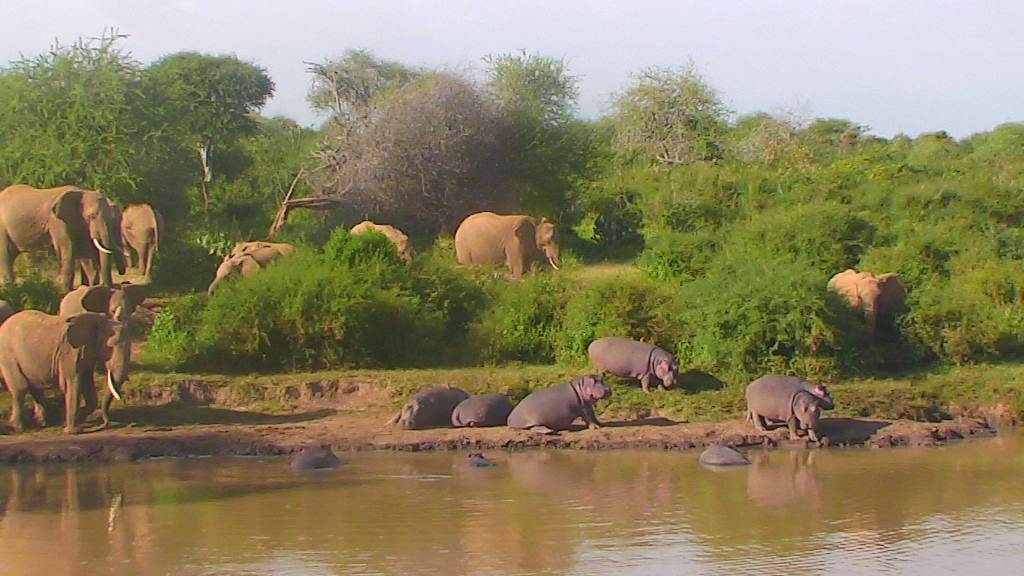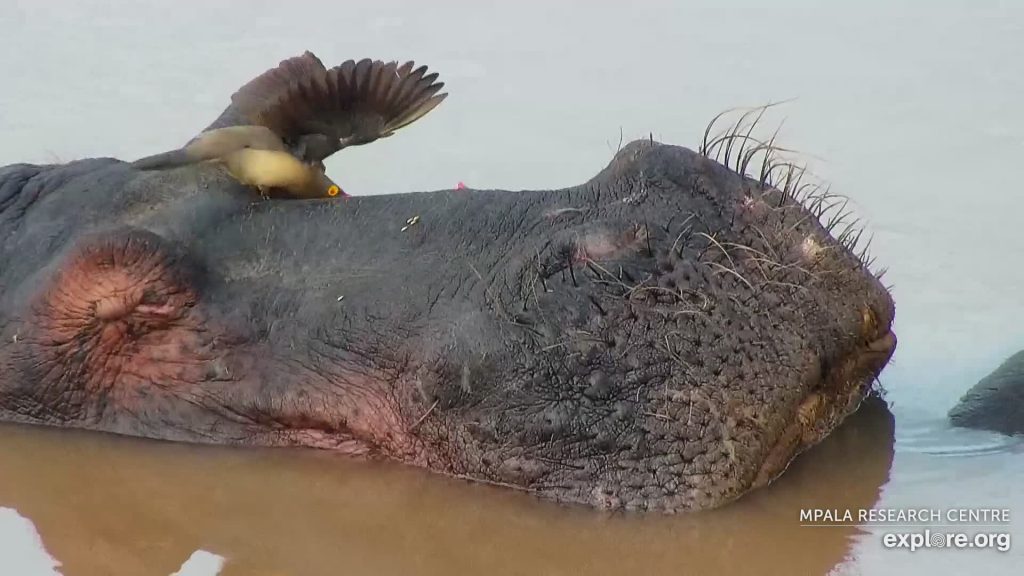Today let’s celebrate the stars of the show at Mpala’s live cams—HIPPOS! There has been a resident pod here for decades. So established are they that surrounding communities and ranches refer to the location as THE hippo pool. Nestled in a bend of the Ewaso N’Giro river, this fairly shallow area with beaches on either side and a cluster of large rocks is prime hippo habitat. Perfect for basking, mud bathing, and grazing, hippos hang here daily, seldom disappearing except in times of extreme drought or flooding rains.

These charismatic creatures have captured cam viewers’ hearts, charming us with their unique bodies, soulful expressions, and parenting skills. Recently Cam Op Homebird and others watched a “cheeky Black Crake looking for dinner in a hippo’s ear.” Like the ubiquitous oxpecker, this crake used its neon-yellow bill to feed in and around the hippo’s ears. Meanwhile the hippo never blinked, sleeping placidly throughout the encounter. The crake even spent a little time strutting on the hippo’s nostrils.

V. May
Despite living large in front of the live cams, hippos are not well-studied in the wild. Their size and aquatic habits make them very difficult to collar. “The lack of data on hippo movement has been a big blind spot in hippo conservation,” says Douglas McCauley, a former Mpala researcher and associate professor at the University of California, Santa Barbara. “And if you don’t know where a hippo goes, how in the world can you design a thoughtful management plan for the species?” Recently scientists were able to put ankle bracelets for tracking on ten hippos in Tanzania. You can learn more here: https://www.futurity.org/hippos-conservation-tracking-2201072-2/
Here are some fun hippo facts for you to enjoy:
• Hippos cannot actually swim or float. Instead, they walk along the bottom of rivers and watering holes.
• Its skin is incredibly strong and can be up to 2.4 inches (60 mm) thick. It represents 18 percent of its body weight.
• A male hippo can weigh as much as 4,400 lb (1,196 kg)—which means it skin can weigh about 800 lb (362 kg).
• The skin secretes a reddish substance that may act as a kind of sunscreen and helps cuts heal quickly.
• They have been observed rescuing antelopes from drowning by pushing them up onto banks and intervening to save them from crocs.
You can learn more at https://www.mpalalive.org/field_guide/hippopotamus
And enjoy a short video of hippos on the move at: https://www.mpalalive.org/best_of/hippo-highlights
Also, a wonderful film about hippos, Mzima: Haunt of the Riverhorse, observes their life underwater. The footage of fish “cleaning” hippos by plucking loose skin, parasites, and debris from them fascinates. Fish have even been observed swimming into their mouths. I’ve often wondered about the underwater life of Mpala’s hippos. Unlike the crystal-clear Mzima springs of the movie, the hippo pool waters are opaque.
Peace
Val @ mpalalive.org



